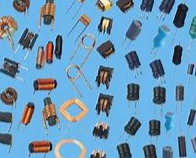In the multifaceted realm of a modern, diversified society, the role of robotics emerges as an integral catalyst, driving the momentum of industrial and medical sectors. Precise surgical operations performed with robotic finesse sit at one end of the spectrum, while on the other, the lifting of cumbersome objects along industrial assembly lines showcases the enhancement of productivity and precision. Central to these marvels of technology is the motor—the heart of robotics—whose evolving design propels the limits of flexibility and accuracy. This article delves into the burgeoning innovations in motor drive technology, dissecting their pivotal role in surmounting the intricacies of robotic motion design, thereby paving the path for robots that are swifter, stronger, and more meticulous than ever before.
At the core of robotic dexterity is motor motion control, an indispensable technology that breathes life into the complex choreographies of, say, a surgical robot mimicking the nuanced gestures of a human hand or an industrial arm tirelessly performing high-load, repetitive tasks. Consider, for instance, the brushless DC motors (BLDC); their prowess in achieving precise speed and position control via electronic signals is quintessential, especially in scenarios demanding surgical-grade precision.
Yet, as the frontier of robotics continuously expands and evolves, traditional motor driving methodologies encounter unprecedented challenges. These include, but are not limited to, enhancing the safety parameters in human-robot interactions, decentralizing motor architecture to lighten the load, streamlining wiring complexities, economizing costs, and achieving zeniths of motion accuracy while optimizing energy utilization. In the relentless pursuit to overcome these obstacles, motor drive technology is in a perpetual state of innovation, aligning with the dynamic exigencies of robotics.
Paramount in the realm of human-robot synergy is safety. As robots become ubiquitous in human habitats, the bar for safety standards is incessantly raised. Modern motor control units, such as the C2000™ 32-bit TMS320F28P650DK MCU, stand as testaments to this commitment, offering functional safety certifications that guarantee emergency halts without compromising safety. Furthermore, ingenious solutions like the smart gate driver, DRV8353F, ensure adherence to international safety protocols, fortifying the security of robotic assistants in collaborative spaces.

Simultaneously, the quest for more streamlined, cost-effective robot designs propels motor electronics from their conventional domiciles in control cabinets to direct integration within the robotic joints themselves. This shift not only alleviates weight and simplifies the labyrinth of wiring but also trims down expenses. Innovations like gallium nitride field-effect transistors epitomize this trend by packing more functionality into diminutive integrated circuits, thereby amplifying power density and efficiency and fostering motor designs that are both compact and potent.
Moreover, the automation of intricate motion tasks escalates the demand for unparalleled motor precision and accuracy. Semiconductor breakthroughs, such as high-precision current sensors, offer refined control signals, facilitating enhanced motion control. Concurrently, optimizing power efficiency emerges as a critical consideration for mobile robots, intimately tied to their operational longevity and effectiveness. Integrated motor controllers like the MCT8316A are at the forefront, judiciously managing power consumption to prolong battery life while ensuring motion remains seamless and efficient.
In conclusion, the relentless tide of innovation in motor drive technology isn't merely a trend within the robotics domain but a fundamental driver of revolutionary strides in robot motion design. As we look ahead, the integration of novel sensor technologies and advancements in software solutions heralds a future where robots are capable of executing an even wider array of tasks with heightened complexity, precision, and versatility. The ceaseless evolution and innovation of the motors and control technologies that orchestrate their movements promise a trajectory where robotic technology becomes ever more intelligent, efficient, and safe.
